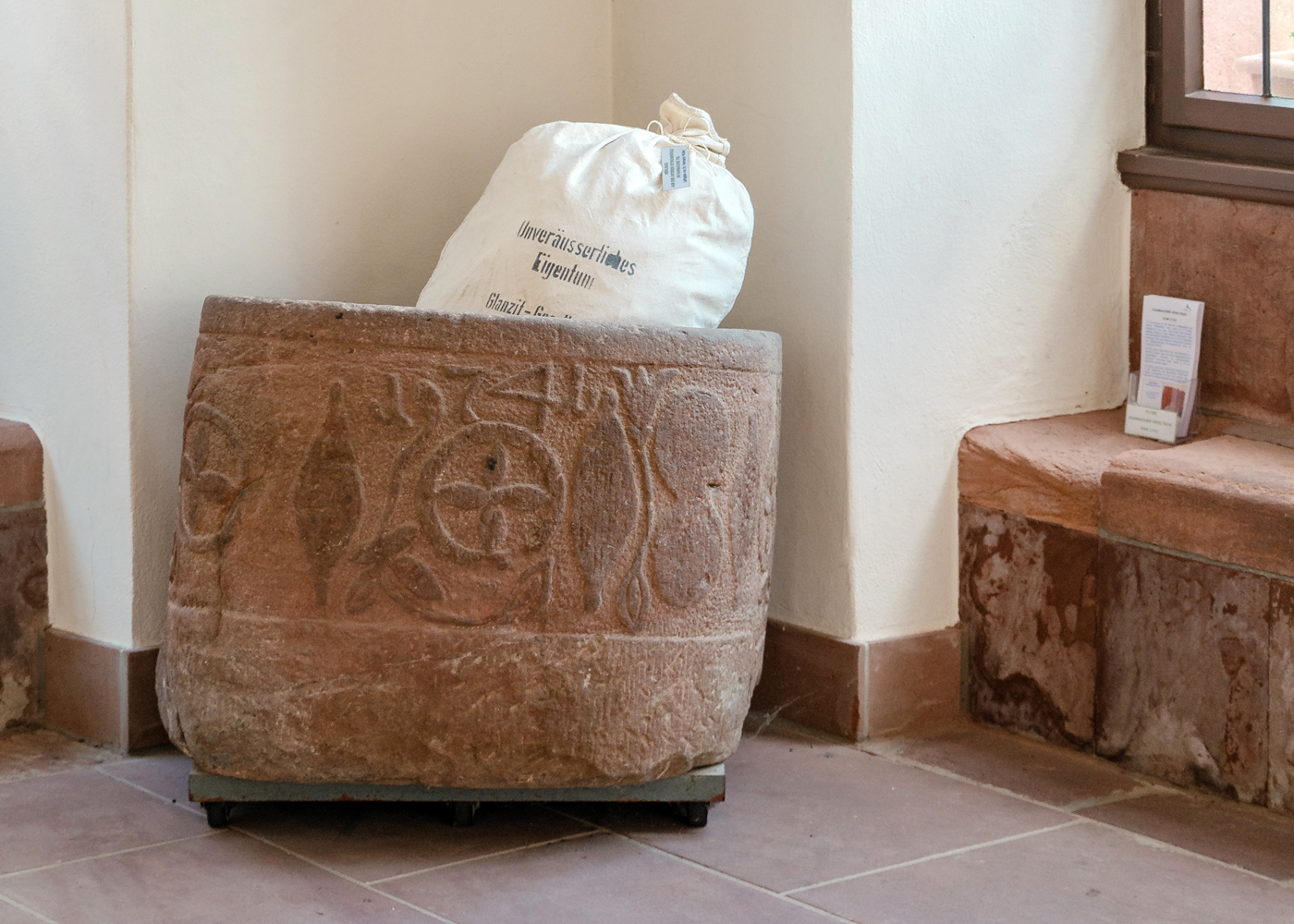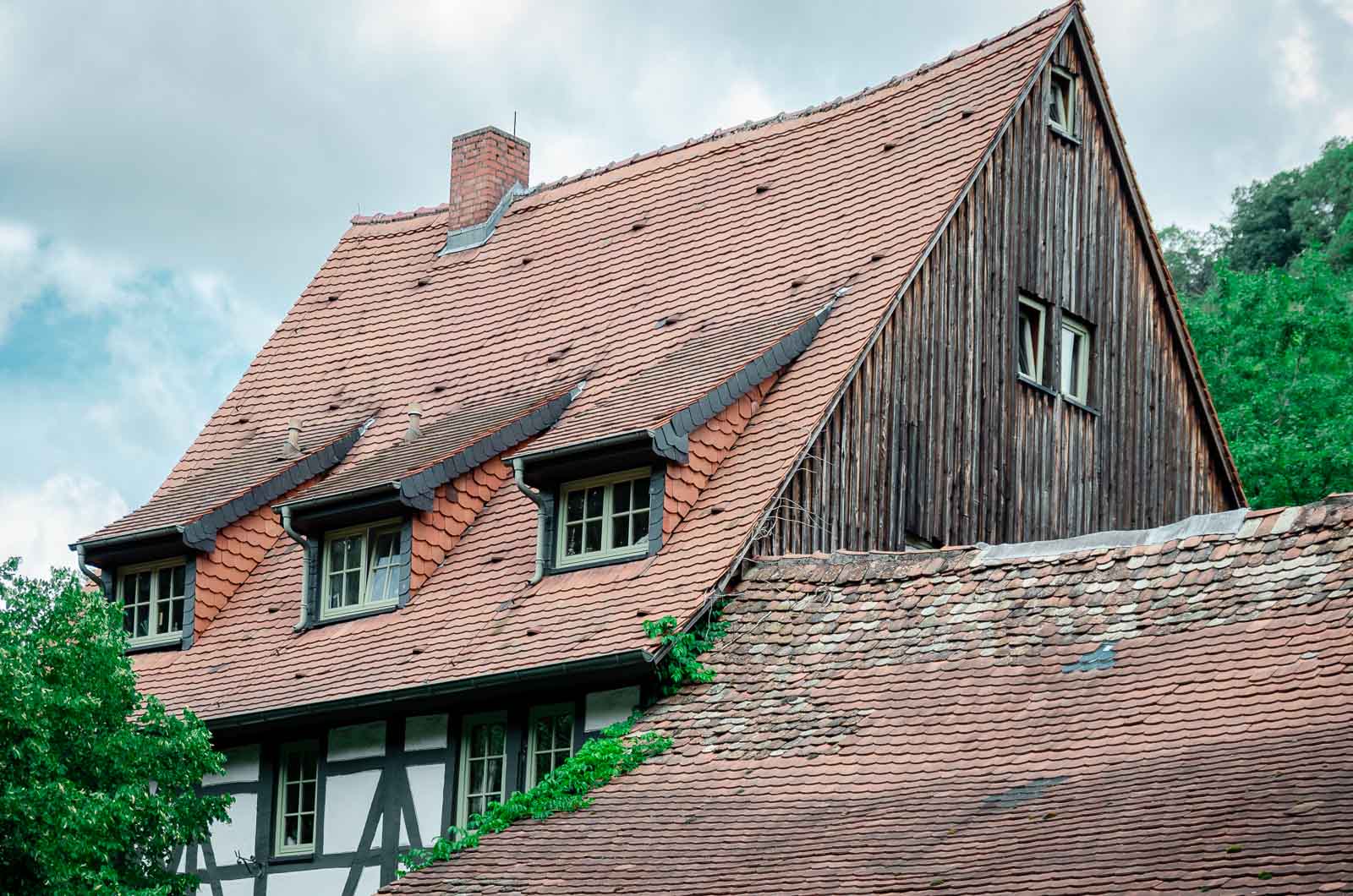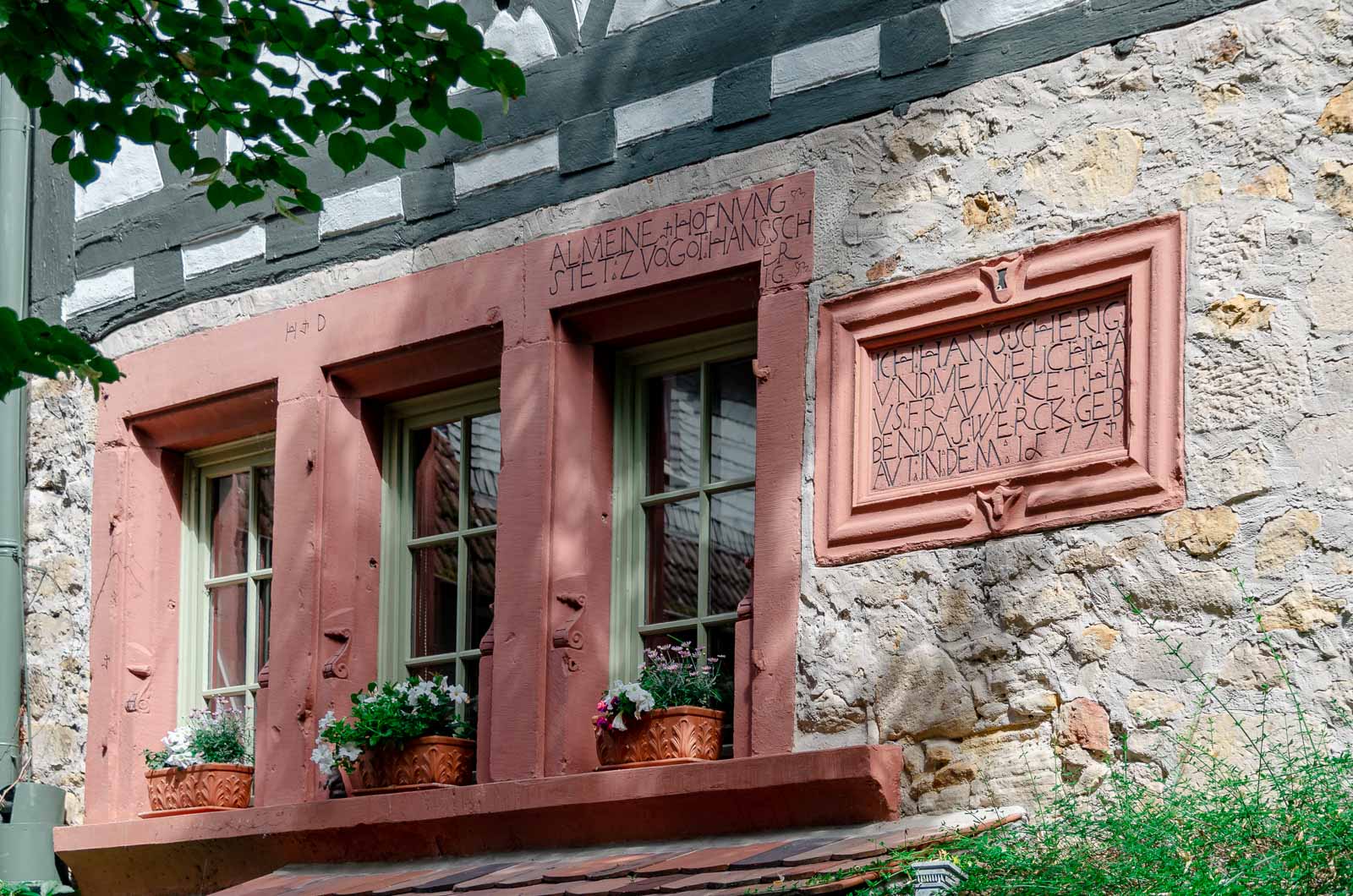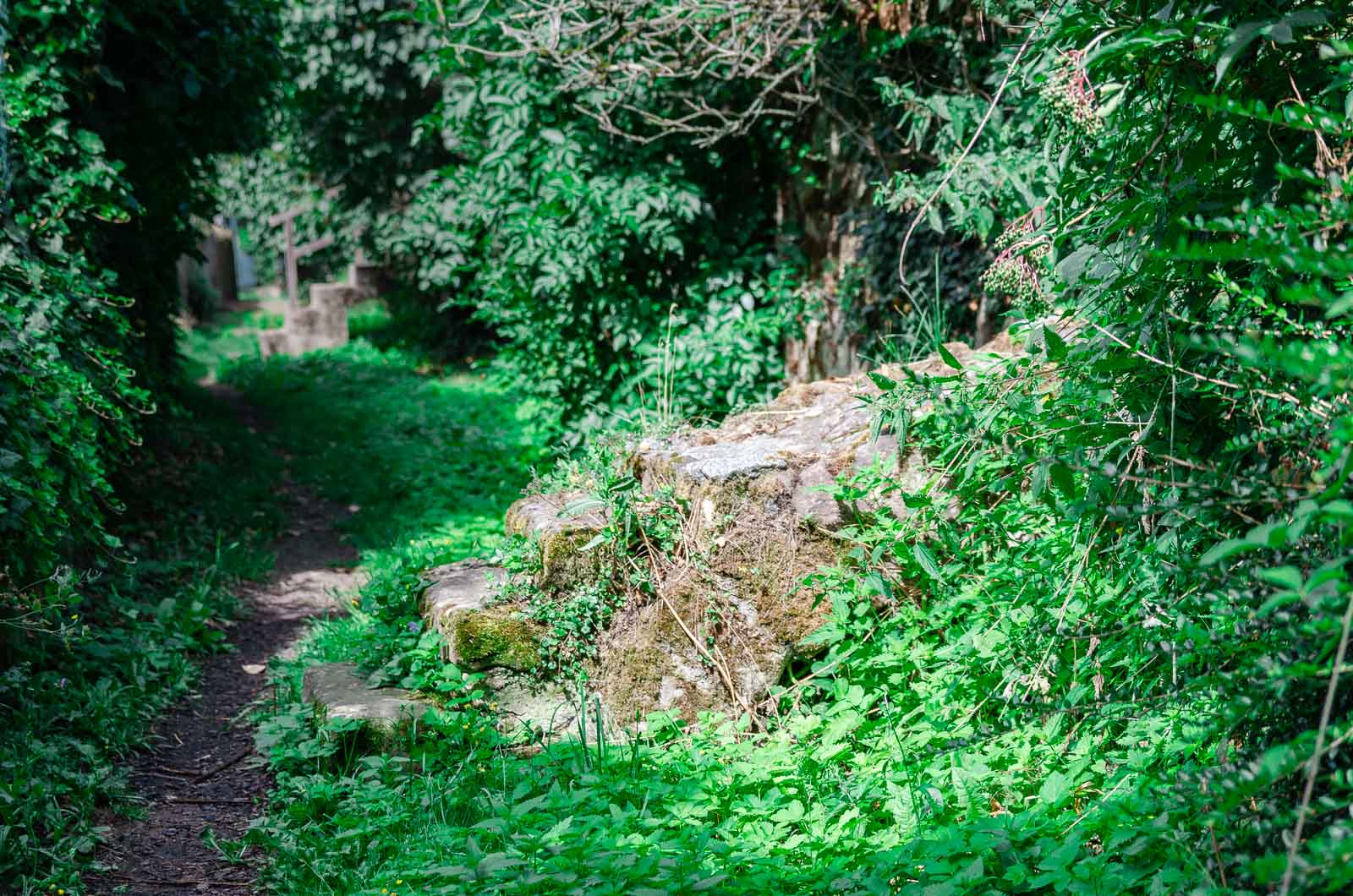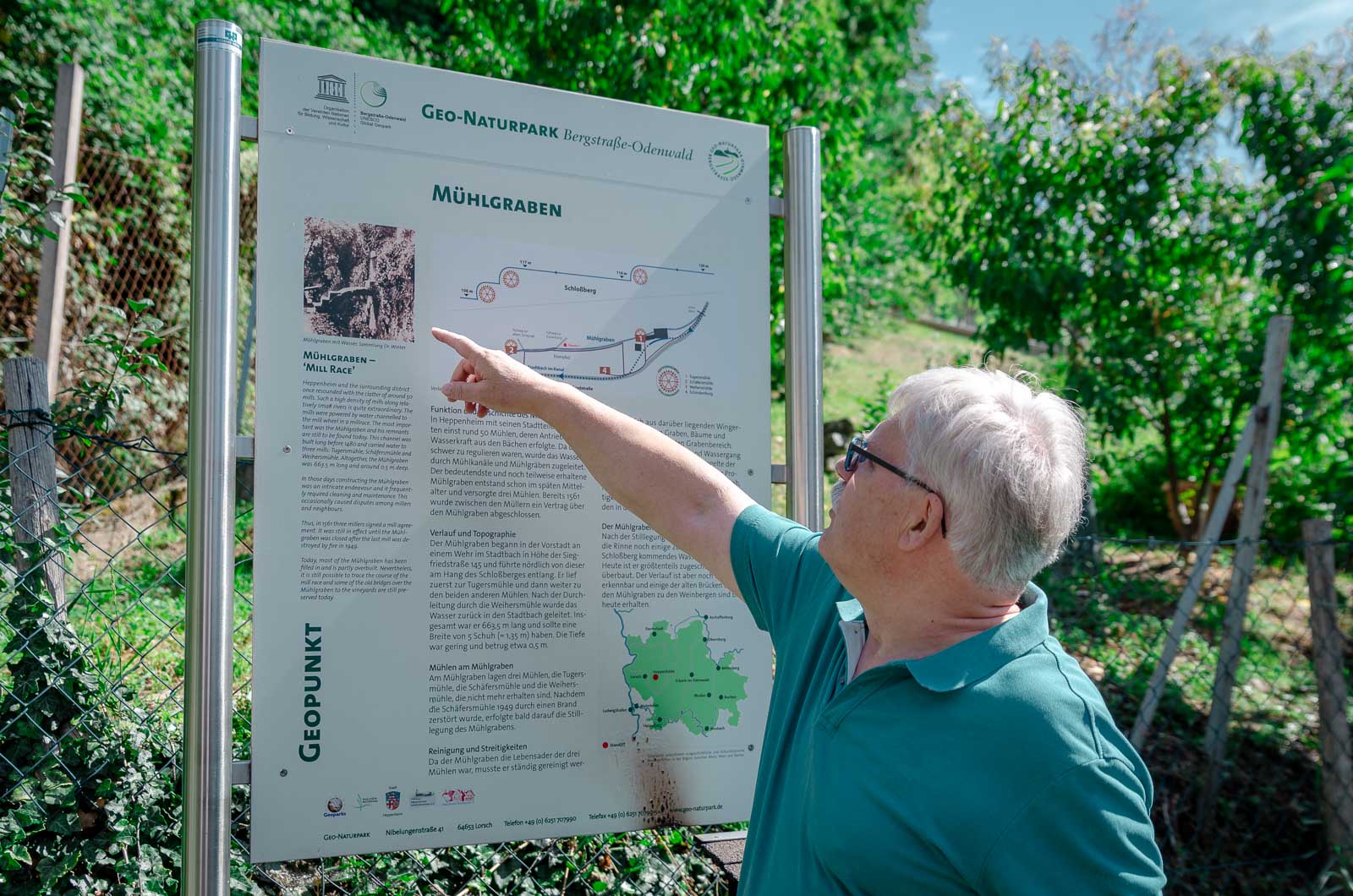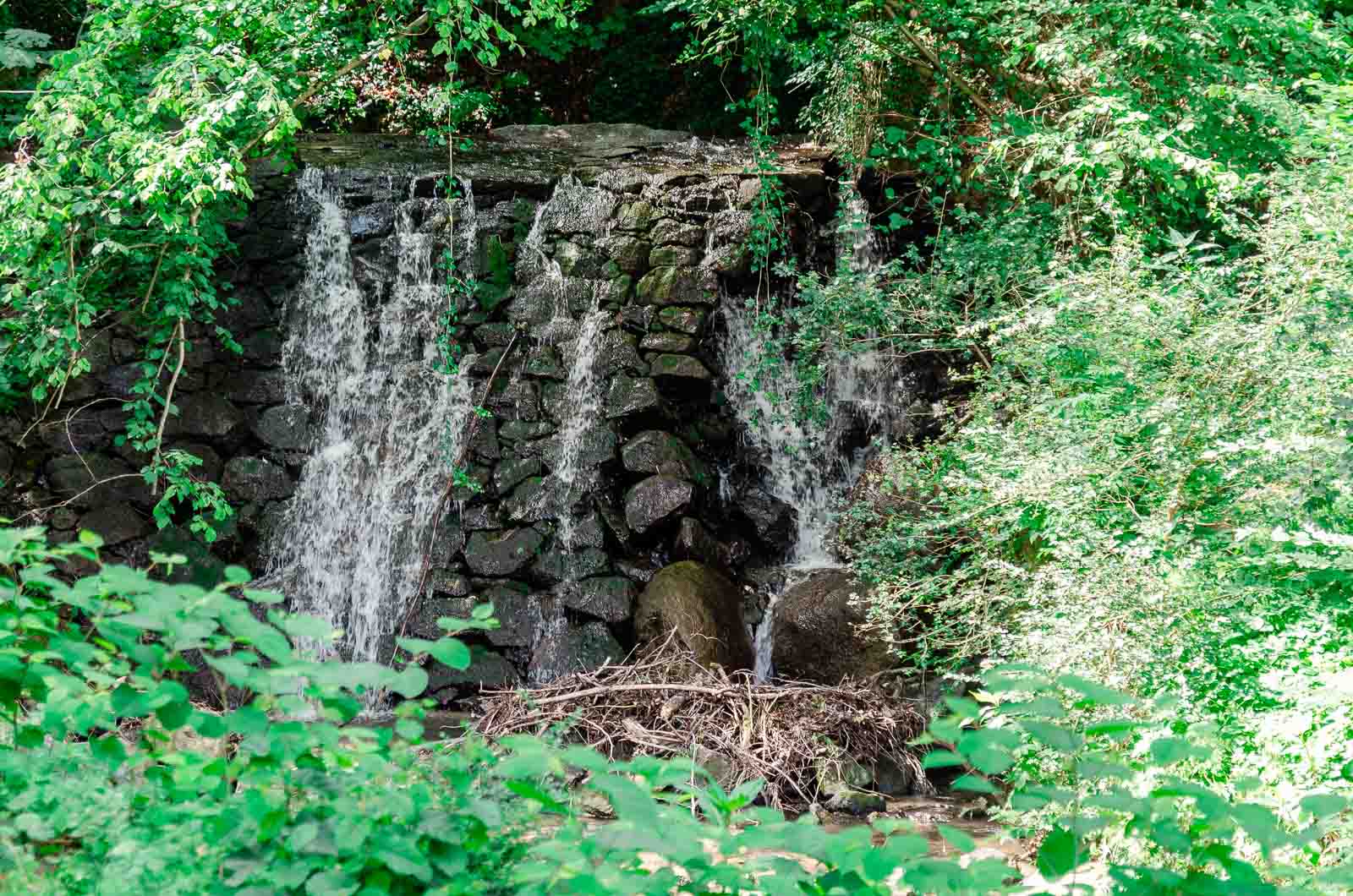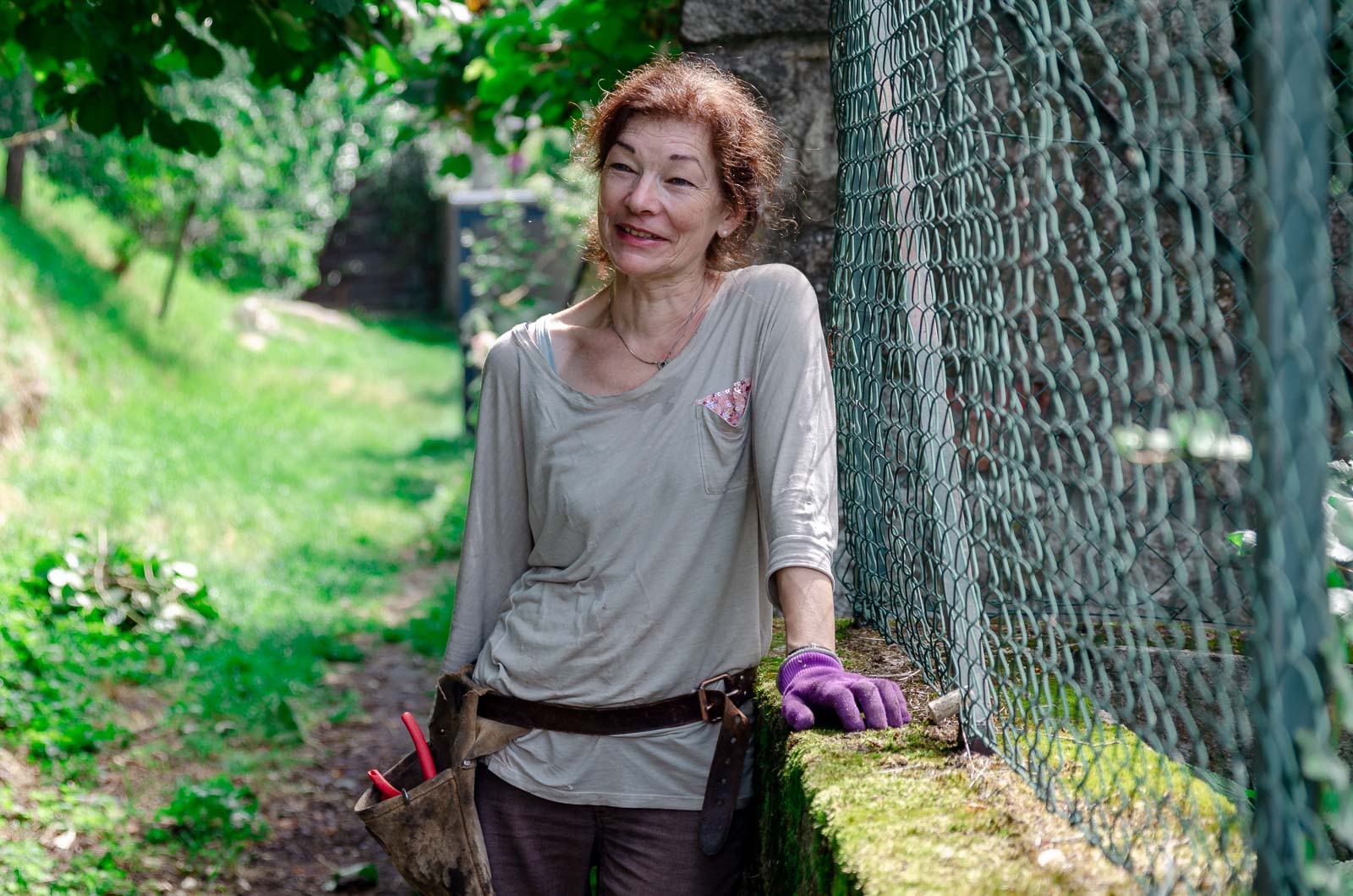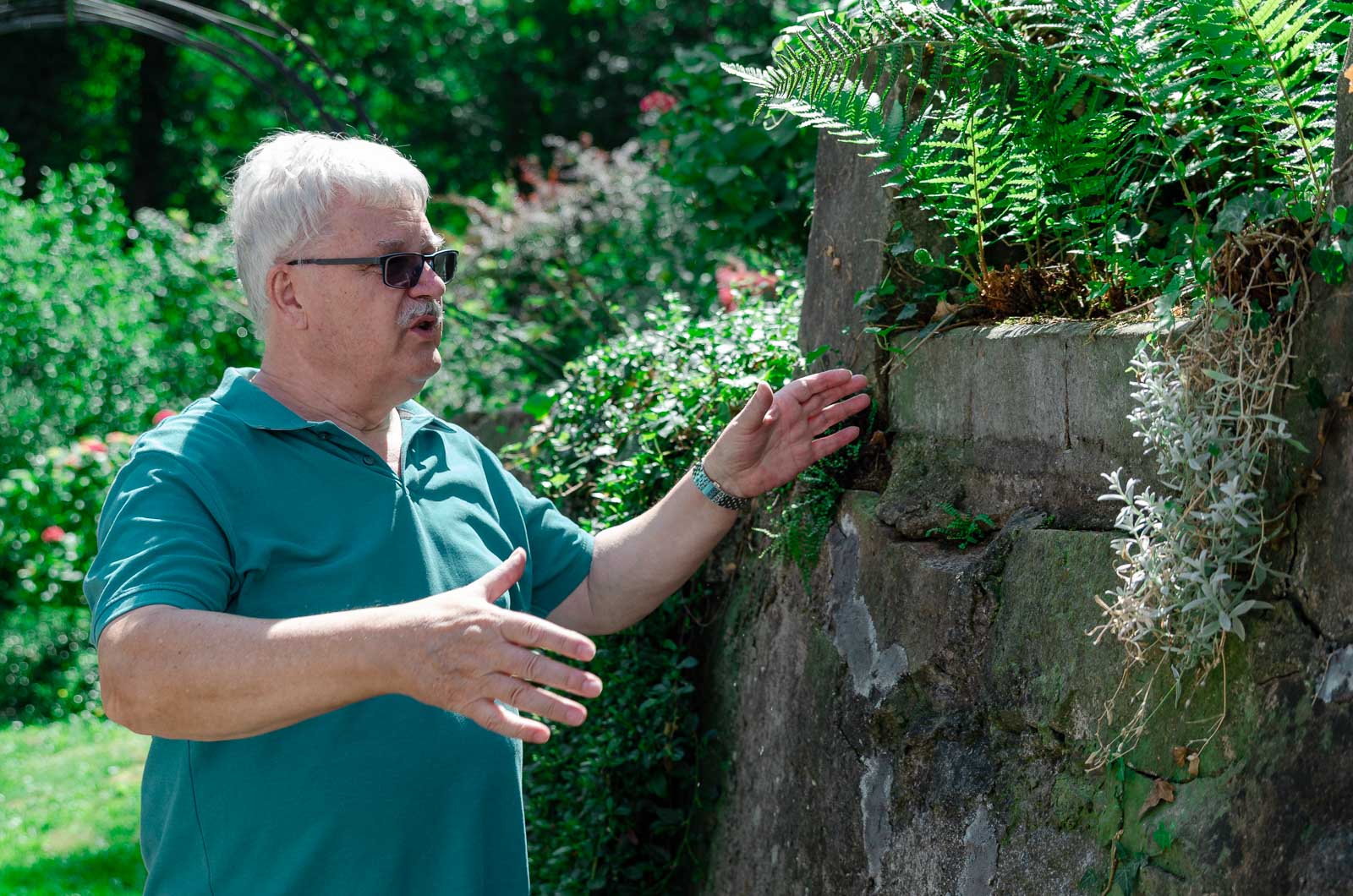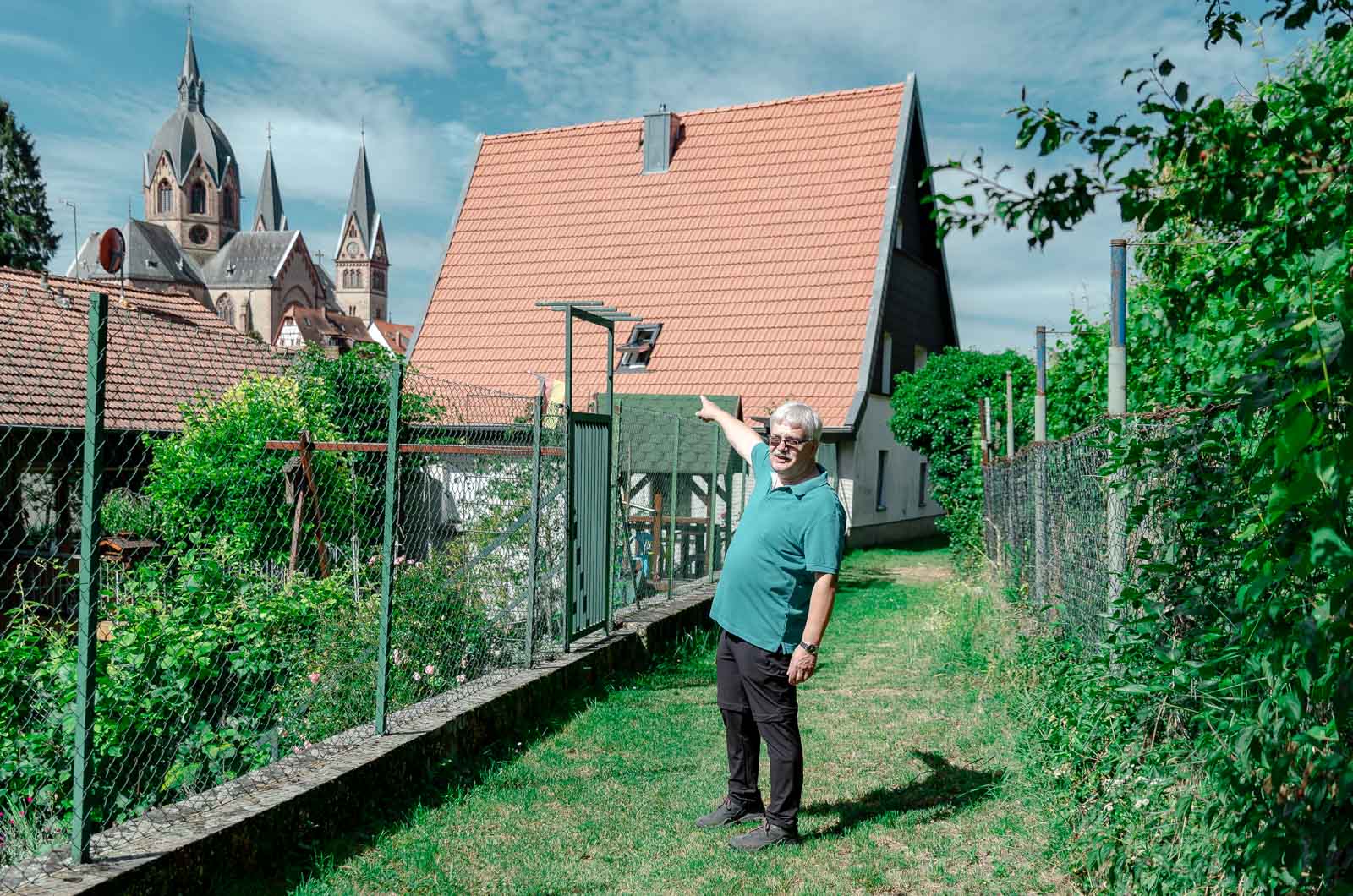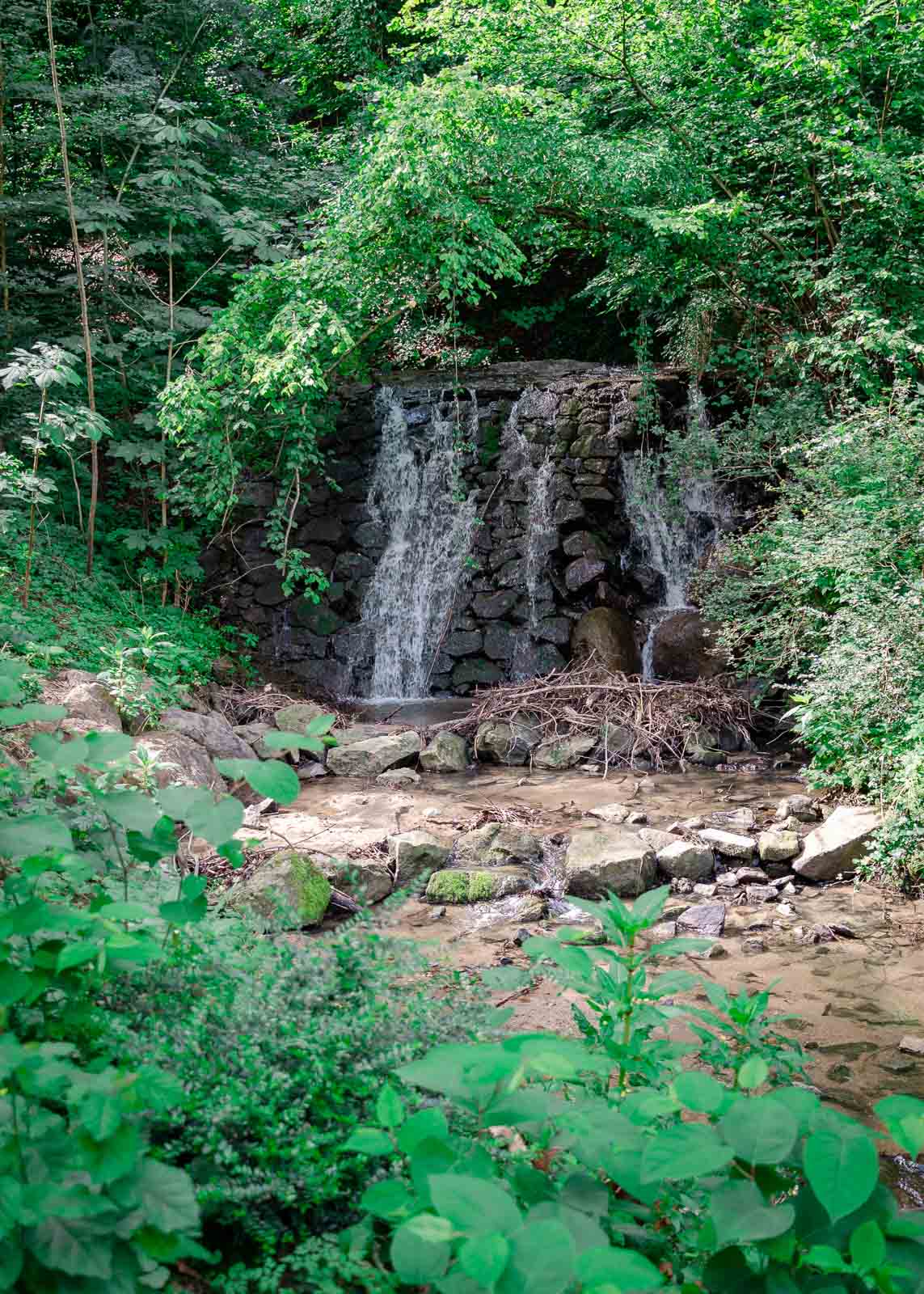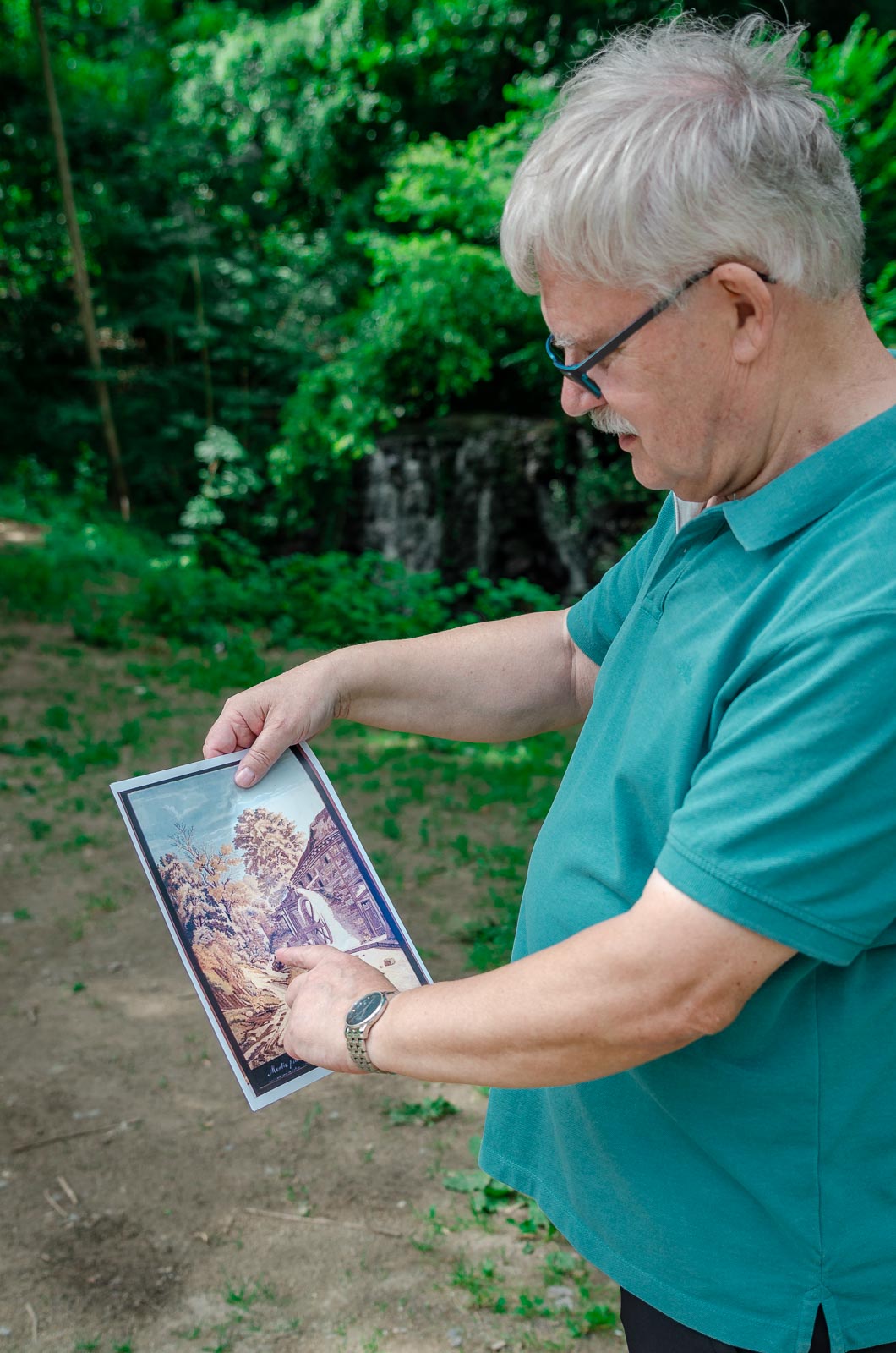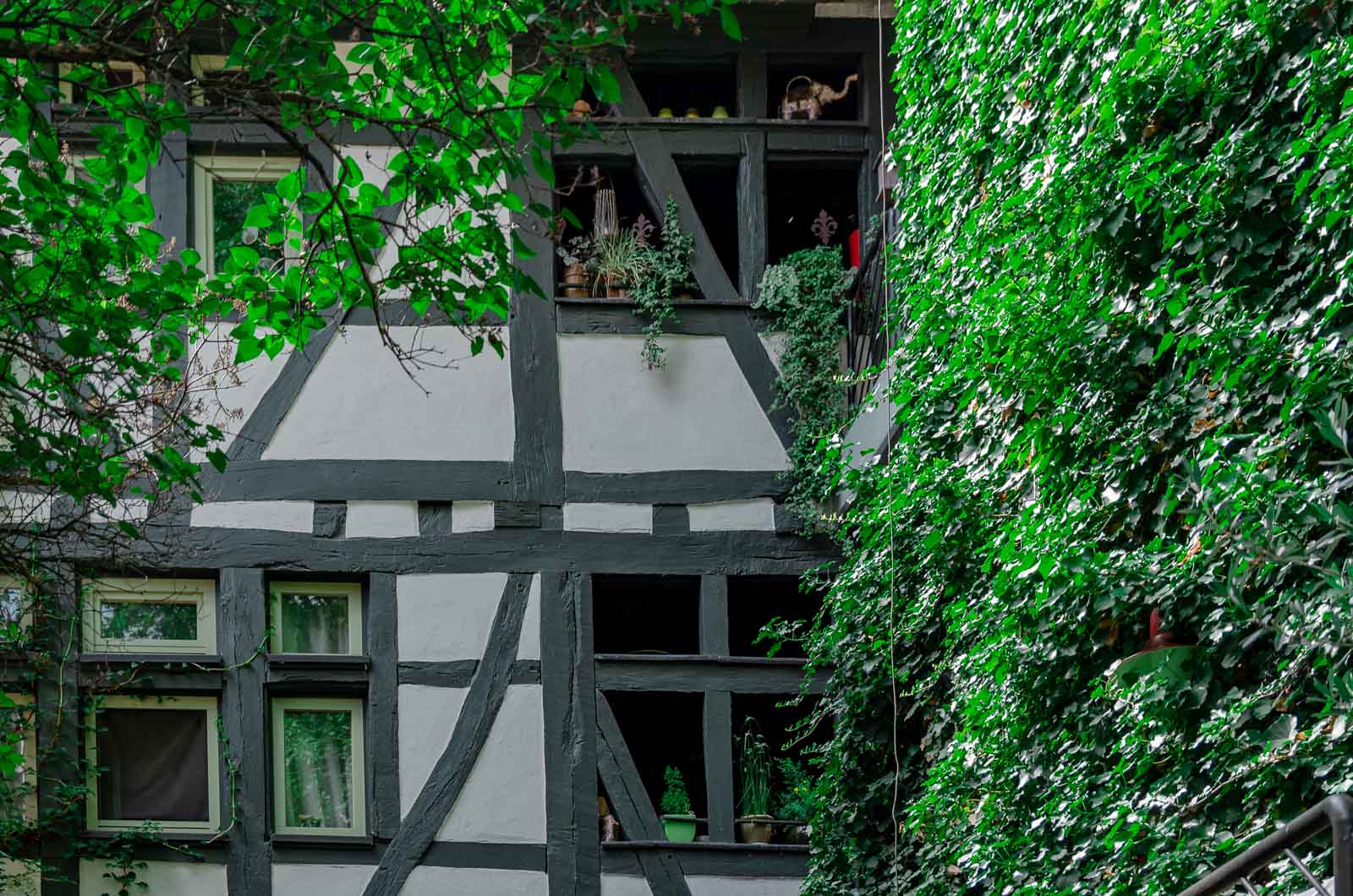At one time, there were over 70 mills in Heppenheim. For a few centuries, they used to supply the region with ground grain and used to produce electricity or saw wood. A circular walk through the town with Hermann Müller is like a paperchase—just that it is millrinds that show you the way forward.
Hermann Müller approaches the Heppenheim town hall with determination. It is neither the beautiful baroque half-timbering nor the famous carillon that have brought him here. The reason he strides purposefully up to the building is much more inconspicuous and very small—and it has been overlooked by most locals for some centuries. Hermann takes the steps to the entrance of the town hall and leans towards the window on the right pointing at the window jamb. There are symbols and numbers carved in the sandstone. Looking at them closely, you recognize a pretzel, a millrind and the year 1609 symbolizing the baker’s and miller’s guilds—marks left in the stone for posterity.
Millers? In Heppenheim? This is what Hermann Müller, whose last name means miller in German, wondered about, when he first discovered signs of the history of mills in Heppenheim in 2011. It is, of course, no coincidence that his name is Müller. “I grew up in the Palatinate and I am a passionate researcher into genealogy and local history,” he says. Tracing back his family history, Hermann discovered that there were some millers by profession among them. But of all these, he smiles, none of them were called Müller. One day, he was doing research in the mill database of the Palatinate to find information about his ancestors. What he found instead was the name of the town he had lived in for almost 30 years: Heppenheim.
“I found this amazing. After having lived in this town for so many years I heard for the first time that there were once mills here.” The incident piqued his curiosity and he began to plough through archives and study maps and land registers. Hermann gets out a piece of paper in A4 format that briefly lists the results of his research up to July 2020: 62 watermills on 5 brooks in the town and 4 mills driven with other techniques, “one of them apparently driven by dogs,” he says. Only two months ago, he found out that there was a steam mill as well. And another 7 mills whose drive remains yet to be discovered by him. Furthermore, some mills that he hasn’t been able to allocate yet.



